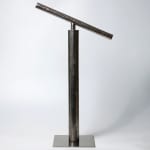Yamada Hikaru 山田光 Japanese, 1924-2001
H70.2cm x W38.8cm x D5.5cm
Published ”CLAY WORK BY YAMADA HIKARU”, 2004, Sekaishisosha Co., Ltd
1995 Exhibited at Isetan department store
Further images
-
(View a larger image of thumbnail 1
)

-
(View a larger image of thumbnail 2
)

-
(View a larger image of thumbnail 3
)

-
(View a larger image of thumbnail 4
)

-
(View a larger image of thumbnail 5
)

-
(View a larger image of thumbnail 6
)

-
(View a larger image of thumbnail 7
)

-
(View a larger image of thumbnail 8
)

-
(View a larger image of thumbnail 9
)

-
(View a larger image of thumbnail 10
)

-
(View a larger image of thumbnail 11
)

-
(View a larger image of thumbnail 12
)

-
(View a larger image of thumbnail 13
)

-
(View a larger image of thumbnail 14
)

-
(View a larger image of thumbnail 15
)

-
(View a larger image of thumbnail 16
)

-
(View a larger image of thumbnail 17
)

-
(View a larger image of thumbnail 18
)

-
(View a larger image of thumbnail 19
)

-
(View a larger image of thumbnail 20
)

-
(View a larger image of thumbnail 21
)

-
(View a larger image of thumbnail 22
)

This piece exhibits a profound influence from Picasso and Duchamp’s assemblage sculptures, with a notable parallel found in Picasso’s iconic Bull's Head from 1942 (pictured on the left, private collection)—a striking "Found objects” assemblage. In the 90’s, Yamada delved into the exploration of matter, pondering questions related to object-hood and materiality. He engaged in theoretical musings, posing inquiries such as "What defines the identity of objects?" and "How can ceramics emulate the appearance of metal (inter-materiality)?" The artist sought to understand the historical contexts of clay, contemplating where he could now situate them.
Yamada's unconventional approach to materials and techniques is vividly embodied in Pipe, symbolizing his philosophical, conceptual, and theoretical artistic disposition. While Yagi Kazuo is often regarded as the true theorist of the Sodeisha movement, some argue that Yamada's contributions challenge this perception. This piece stands as a testament to Yamada's intellectual and creative prowess, suggesting a potential reevaluation of the hierarchy within the movement.





















